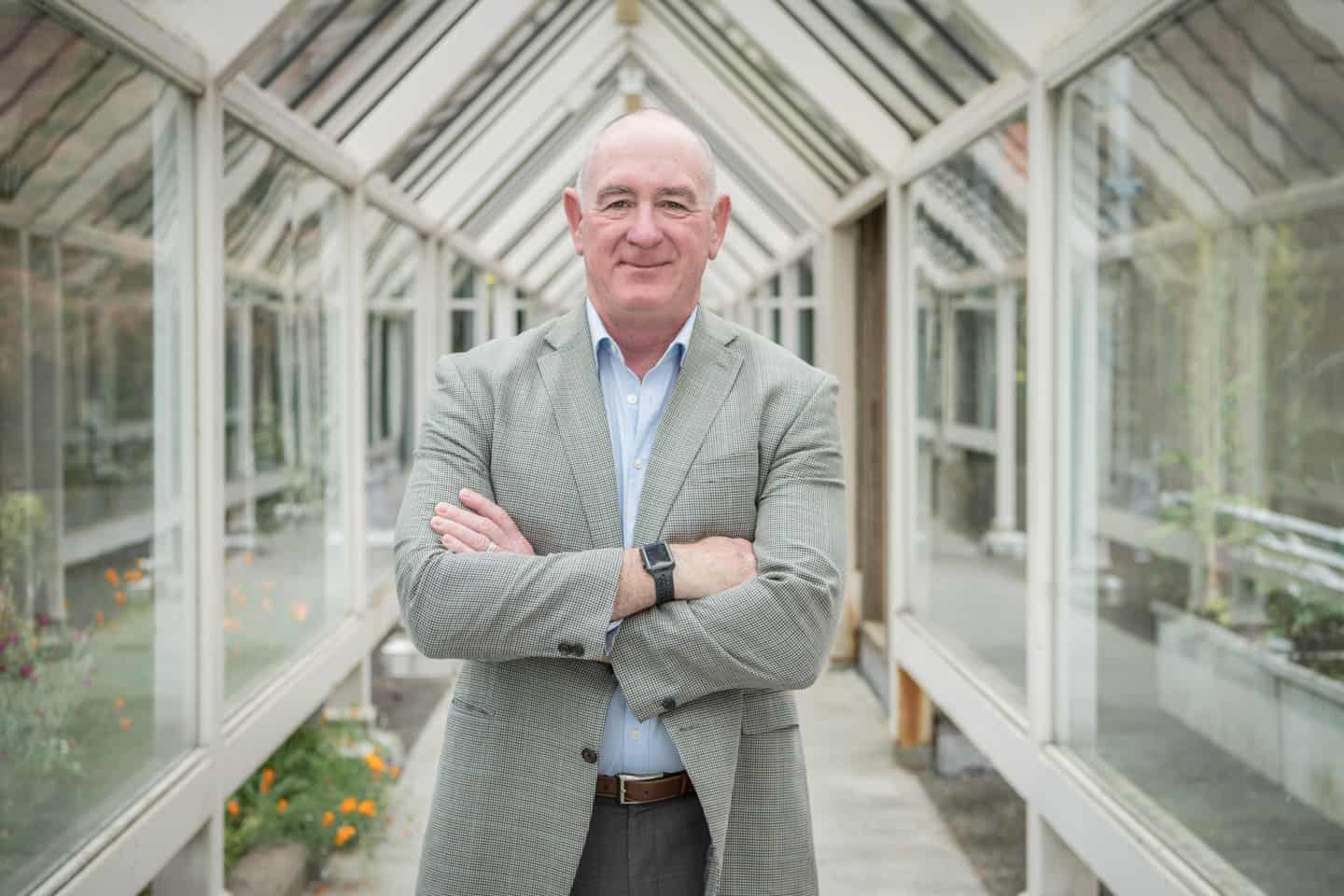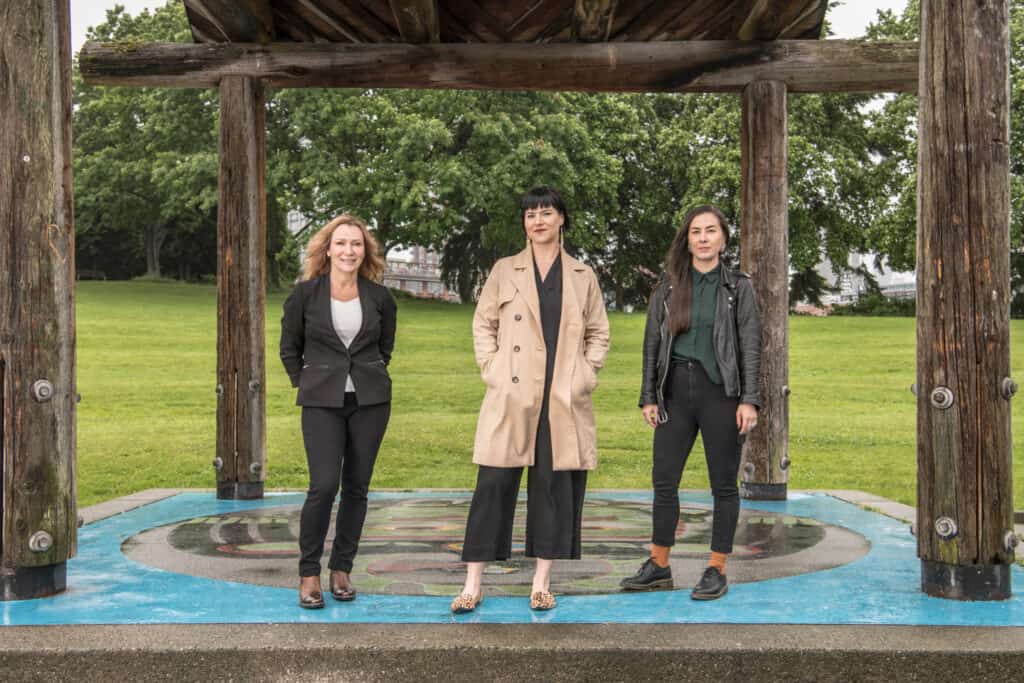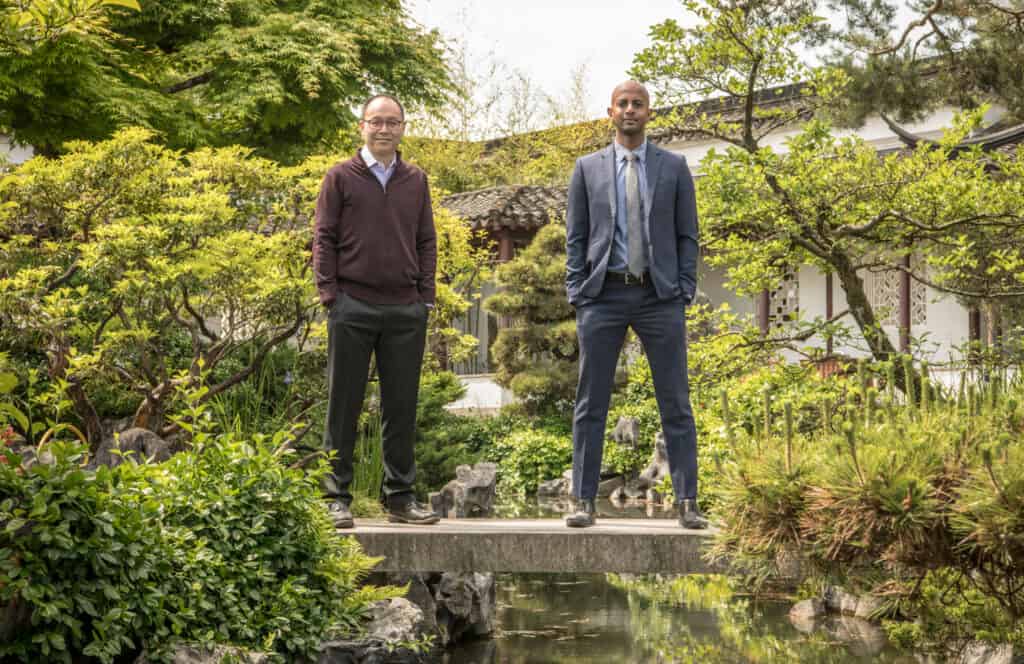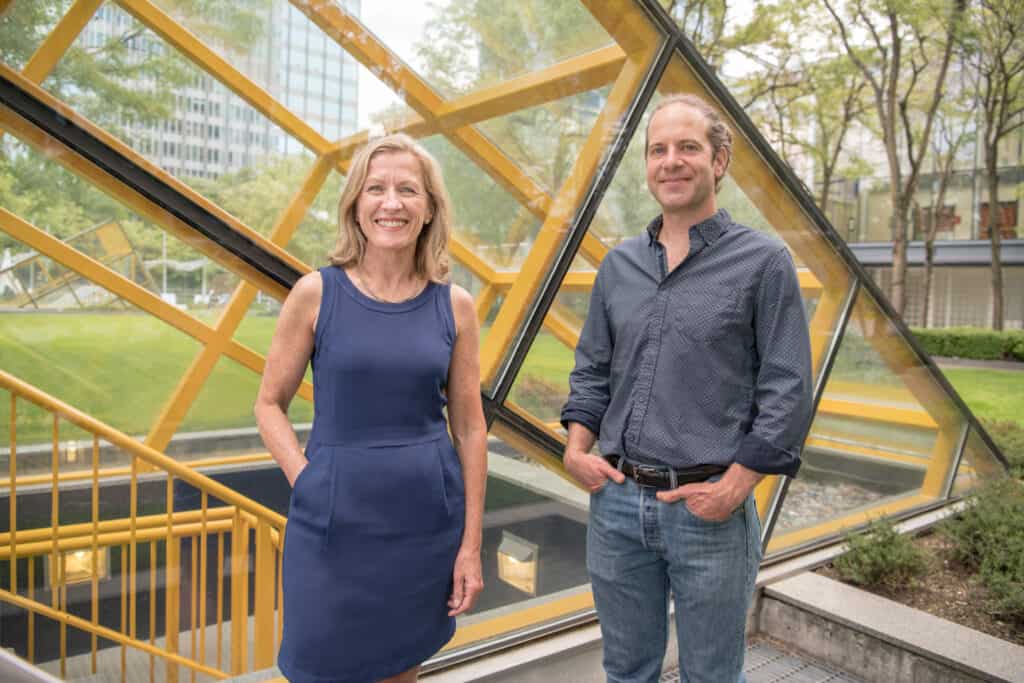Published Promise 2020
The building blocks of future medical breakthroughs will come from our own bodies: blood, tissue, sputum. But how do we get from a patient having a nasal swab for COVID-19 to a treatment, a vaccine, or even a cure? It starts by fostering a unique partnership between patients, researchers, and clinicians.
Identifying the genes associated with peanut allergy; curing sepsis (an infection that kills more people worldwide than cancer or heart disease); restoring lung function in people with COPD; developing new ways to treat and even prevent COVID-19. These are just some of the research projects happening right now at St. Paul’s.
“It’s definitely an exciting time,” says Dr. Darryl Knight, vice-president of research at Providence Health Care (PHC). Originally from Australia, Knight is on what he calls his “third tour of duty” at PHC. He did his postdoctoral fellowship at St. Paul’s, came back as a Canada Research Chair, and is now bringing his considerable experience, expertise, and enthusiasm to PHC’s research portfolio. “I’m here to build an ecosystem that will seamlessly integrate clinical care, research, education, and most importantly patients,” he says.
Patients as partners
Knight has a deeply personal commitment to patient-centred research. It stems from his years as a cell biologist studying pulmonary fibrosis. “It’s an absolutely brutal disease,” he says. “Your lungs fill with scar tissue and you essentially drown because your lungs can’t expand to get enough air. You don’t know you have it until it’s too late. And there’s no cure except a lung transplant.”
Knight knew that to understand the disease, researchers needed to study the lungs of people affected by it. But incredibly, the vast majority of available lungs from patients who died or had transplants were discarded. They weren’t used for research or biobanked. “It’s a travesty,” he says. “Especially because 100% of patients with this disease want their lungs used to find a cure.”
“Can you imagine how much knowledge we could have gleaned from those lungs?” he asks. Of course, other organs and tissues are equally valuable. “All of the information and data we have about disease comes directly from the biospecimens of people with those diseases.”
That’s why Knight’s vision for research at PHC puts patients in the pivotal role as partners who are fully engaged in our studies and included in our findings. “In this way, we hope they’ll become advocates for the research we do,” he says.
Excellence lives here
Knight joins a prominent research community that includes the Providence Health Care Research Institute (PHCRI), which houses centres for excellence in heart, lung, HIV/ AIDS, gender studies, and substance use, and two of the world’s largest biobanks: one for heart and blood-vessel tissue and one for lung tissue.
PHCRI is also the home of CHÉOS, the Centre for Health Evaluation and Outcomes Science. Scientists at CHÉOS have a mandate to assess the effectiveness of health interventions (things like specific treatments, surgeries, medical devices, diagnostic tools, or medications) to find new and better ways to transform health care. As part of their work, CHÉOS investigators coordinate and conduct many clinical trials, particularly in the HIV field.
CHÉOS researchers range from those still in graduate or postgraduate school to those at the very top of their fields in medicine, public health, pharmaceutical sciences, and business. This environment creates the space for collaboration and mentorship across disciplines and generations. (See “The Science of Seniors and Healthy Aging” section for more.)
Our research partners are large, internationally renowned, and agile. Knight cites COVID-19 as an example. “Right away, PHC and our partners were keen to get out of our silos, work together, and start a provincial COVID blood biobank.”
Plans are already underway to expand its scope to include other tissues. As Knight says, “Studying tissue from people with the disease, those who have recovered, and those who were never infected will make us better and smarter at understanding all disease, not just the coronavirus.”
Innovation precinct
Looking ahead, Knight is inspired by the once-in-a-lifetime opportunity to plan and build a brand new St. Paul’s at the Jim Pattison Medical Centre – a hospital quite literally attached to a world-class research hub. A place that will inspire a virtuous circle of collaboration between patients, researchers, clinicians, and industry partners to develop new drugs, treatments, and therapies.
Knight is not alone in his vision of the new St. Paul’s as a nexus for health care, life sciences, and research. Alan Winter, BC’s former innovation commissioner, spent two years studying ways to make BC more innovative. His number one recommendation? Establish a “major innovation precinct” around the new St. Paul’s. A place to focus on health research and development that will be “globally recognized and enable investment and growth of BC companies in health, life science, and supporting areas including IT, augmented and virtual reality, medical devices, and digital health.”
We’re already ahead of the curve thanks to our singular “made at St. Paul’s” culture of innovation. And we have ambitious plans to fast-track further advances in COPD, heart disease, diabetes, mental health, at-risk youth, substance use, aging and dementia, and Indigenous health.
It’s a hefty mandate. But Knight and the entire PHC team are more It’s a hefty mandate. But Knight and the entire PHC team are more than up for the challenge. “We have the vision. We have the passion. And we have people who are wired to think differently.” Of course we do. This is St. Paul’s, after all.
The building blocks of breakthroughs
Remember Watson, the supercomputer that won on Jeopardy? Watson is an example of machine learning: searching huge sets of data, in real time, to answer specific questions. Watson won because it was able to master the game’s betting strategy and language – even the puns and tricky phrasings that are the hallmark of the show’s answer-and-question format.
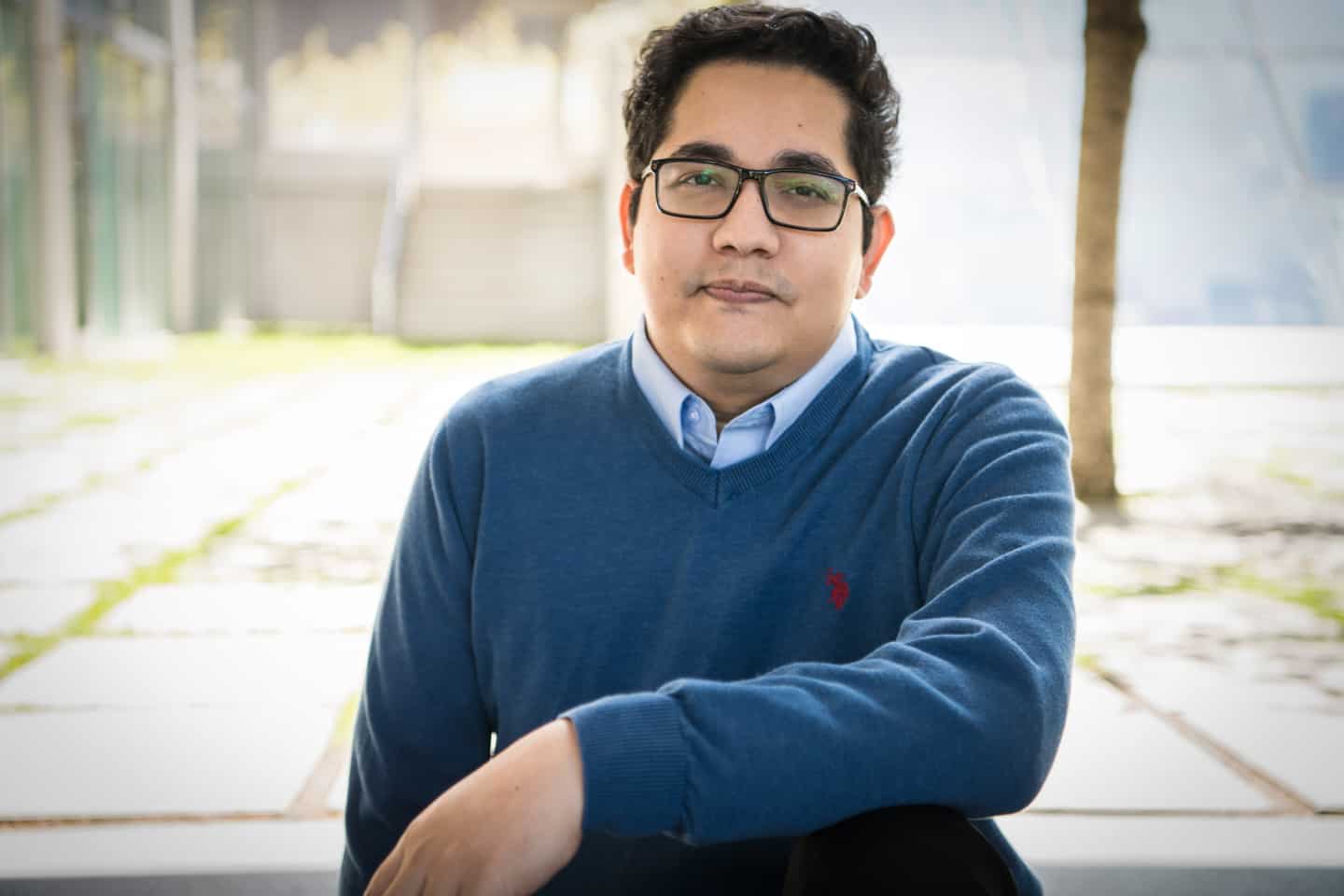
Almost 10 years later, machine learning has gone from game-show gimmick to indispensable research tool. In his lab, CHÉOS scientist and biostatistician Dr. Ehsan Karim has harnessed machine learning to reveal new information about the effectiveness and long-term safety of different drugs.
One of the most intriguing aspects of Karim’s work is the potential to harness big sets of data as a way to complement traditional clinical trials. “Clinical trials have been the gold standard. But they’re expensive and don’t always answer the questions that patients have.”
Big data may offer a compelling solution. Karim cites a recent discovery driven by one of his students. “People with osteoarthritis have a higher incidence of heart disease. But no one knew if it was caused by the arthritis or the pain medications.” By scouring a large health database with a host of different parameters, the research showed that nonsteroidal anti-inflammatory drugs (like aspirin and ibuprofen) contribute significantly to the risk of cardiovascular disease, heart failure, and stroke in patients with arthritis.
When you consider that more than 75% of people with osteoarthritis are treated with those drugs, you realize just how important and life-changing this research is.
The science of seniors and health aging
PHC has a long, compassionate history of care for seniors. Today, some 700 people live in our long-term and assisted-living care homes. With our partner Providence Living, we are building Canada’s first publicly funded dementia village in Comox. And we are home to the Centre for Healthy Aging, a catalyst for research and advocacy to improve health outcomes for seniors.
We are uniquely positioned to care for, and learn from, the so-called silver tsunami: the cohort of seniors who will make up almost 25% of the Canadian population in just 10 years.
All across PHC, clinical staff, clinician-scientists, and academic researchers work side-by-side. This fosters game-changing collaborations across disciplines and areas of interest.
Consider a recent project between CHÉOS scientists Dr. Annalijn Conklin and Dr. Nadia Khan. Conklin studies the impact of our social and economic environments on healthy aging. Khan is a physician and a scientist; her work focuses on preventing and treating chronic diseases and high blood pressure in vulnerable populations including seniors.
The pair teamed up with Dr. Zeinab Hosseini, former postdoctoral fellow at UBC, and Dr. Gerry Veenstra, professor of sociology at UBC, to investigate whether longevity (as measured by blood pressure and waist circumference) could be affected by marital status, friendships, and activities like socializing, volunteering with charity groups, or participating in sports.

The answer was a resounding yes, particularly for women. The team found that women who were single or widowed had larger waist circumferences and greater odds of being centrally obese (having excess fat around the abdomen) than women who were married. The same was true of women who engaged in two or fewer social activities per month when compared with women having five or more activities. This is concerning because, among other things, these are risk factors for cardiovascular disease. Interestingly, the findings for men were much less definitive, and sometimes showed the opposite.
While much more work is needed to understand the social determinants of healthy aging, the results showed that social engagement is a key driver of health and longevity for older women.
The timing of their findings couldn’t be more critical as we transition into our post-pandemic world – a world in which vulnerable seniors may be reluctant to return to their old routines and activities, putting them at risk of loneliness and isolation.
Khan is already leveraging these learnings in her practice. “I specifically talk with my patients about their living arrangements, their diets, and how engaged they are with their friends and activities. If there are gaps, we can address them.” As with so many of the hallmarks of care at St. Paul’s, it’s a perfect intersection of science and compassion.
Photography by Jeff Topham
Help us build a research ecosystem that will improve care for all British Columbians. Make a gift at donate.helpstpauls.com/research to support research today and at the new St. Paul’s Hospital.
